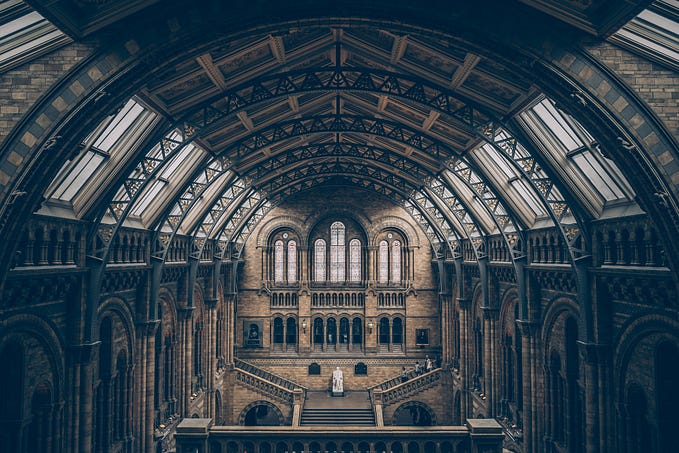Quantum Aesthetics: Exploring the Subatomic World of Design
The design world constantly evolves, driven by innovation and the quest for new perspectives. One intriguing and unconventional approach recently gained traction is “Quantum Aesthetics.” This revolutionary concept draws inspiration from the quantum realm, where subatomic particles’ bizarre and seemingly contradictory behavior has long perplexed physicists.

Quantum Aesthetics, a design concept that explores the subatomic world of design, is a unique and specialized field. While some aspects of Quantum Aesthetics may be covered in an interior design course, it’s not a standard or widely recognized area of study within traditional interior design programs. In this article, we’ll embark on a journey to explore Quantum Aesthetics and its application in the design world, delving into its fascinating principles and how it can reshape our understanding of aesthetics.
Understanding Quantum Aesthetics
To grasp the essence of Quantum Aesthetics, it’s essential to acquaint ourselves with the peculiar principles of quantum mechanics. This realm of physics operates at the most minor scales, governing the behavior of particles like electrons and photons. Quantum physics is known for its intriguing phenomena, including superposition, entanglement, and wave-particle duality. Quantum Aesthetics, in its essence, borrows these principles and applies them to the design world. Superposition, for instance, allows for the coexistence of multiple design elements or styles, providing a fresh, unconventional approach to aesthetic choices. Conversely, entanglement opens the door to connections and associations between design elements that may seem unrelated.
Designing with Quantum Aesthetics
Designing with Quantum Aesthetics is a bold departure from traditional design principles. It encourages designers to embrace paradoxes and contradictions, echoing the enigmatic behaviors of quantum particles. Here’s a closer look at how designers can integrate Quantum Aesthetics into their creative processes:
Embracing Paradox
Quantum Aesthetics challenges the conventional need for design elements to conform to a coherent theme. Designers are encouraged to juxtapose contrasting styles, materials, and concepts in ways that might seem contradictory at first glance. For instance, a Quantum Aesthetics-inspired space could seamlessly blend the rustic with the futuristic, the natural with the industrial, or the serene with the dynamic. The juxtaposition of such elements adds depth and intrigue to the design, creating a captivating and constantly evolving space.
Designing for Flexibility
Quantum Aesthetics calls for inherently adaptable spaces like quantum particles’ ability to exist in multiple states. Designers are urged to create flexible environments that can be reconfigured to suit changing needs and moods. Furniture that can be easily rearranged, modular designs, and multifunctional spaces exemplify this concept. Quantum-inspired rooms are not static; they evolve and transform as the occupants’ requirements change.
Creative Use of Light and Color
Quantum Aesthetics draws parallels between the wave-particle duality of quantum particles and the use of Light and color in design. Just as particles can behave as waves and particles depending on observation, spaces influenced by Quantum Aesthetics use Light and shade in multifaceted ways. For example, the lighting can be designed to switch between warm and cool hues, and colors can change or shift dynamically in response to environmental factors or user preferences, creating a dynamic visual experience.
Storytelling through Connectivity
Entanglement, a quantum principle where particles become interconnected regardless of distance, is a metaphor for the interconnectedness of design elements in Quantum Aesthetics. Spaces are designed to tell intricate stories that transcend traditional boundaries. Objects, materials, and concepts are connected unexpectedly, fostering a sense of unity within the design.
Harmonizing Contradictions
Designers operating within the realm of Quantum Aesthetics harmonize contradictions. The stark and the ornate, the natural and the artificial, and the orderly and the chaotic coexist harmoniously. By juxtaposing these contradictions, designers evoke a sense of complexity, unity, and energy that captivates and engages the observer.
Designing for Discovery
Quantum Aesthetics encourages an element of discovery within a space. Just as quantum particles reveal different properties upon observation, areas influenced by this aesthetic should unfold over time, unveiling new details, connections, and experiences as one explores the environment. Hidden nooks, interactive elements, and transformative features create a sense of intrigue.
Unconventional Material Combinations
Quantum Aesthetics promotes using materials and textures in unexpected combinations. Designers are encouraged to pair materials that are traditionally considered incompatible or unsuitable for each other. This practice creates surfaces and textures that stimulate the senses, inviting exploration and contemplation.
Incorporating Quantum Aesthetics into design requires a willingness to embrace the unexpected and a keen sense of balance. It’s a reminder that the most captivating designs often arise when boundaries are blurred, paradoxes are adopted, and elements can coexist in harmonious complexity.
The Role of Color and Light
Color and Light are foundational elements in design, and in Quantum Aesthetics, they take on a distinct and dynamic role. This design approach explores the fundamental principles of color and Light to create spaces that defy traditional norms and evoke a sense of mystery and wonder. Here’s an in-depth look at the role of color and Light in Quantum Aesthetics:
Dynamic Color Schemes
Quantum Aesthetics encourages the use of dynamic and ever-changing color schemes. Spaces influenced by this aesthetic may feature color-changing elements, such as walls, ceilings, or accents that gradually transition between hues or respond to external factors like time of day or user interactions. The dynamic use of color creates an environment that feels alive and continuously evolving, much like quantum particles in motion.
Emotional Impact
The selection of colors in Quantum Aesthetics is highly intentional and evokes specific emotions. Designers leverage color psychology to create environments that influence the mood, feelings, and perceptions of those within the space. For example, they may use deep blues and purples to induce a sense of calm and introspection or vibrant reds and oranges to inspire energy and passion.
Harmonious Contrasts
Quantum Aesthetics revels in the harmonious coexistence of contrasting colors. Designers embrace the interplay between opposites on the color wheel, such as warm and cool colors or complementary hues. These harmonious contrasts add depth, vibrancy, and complexity to the design. For instance, an environment might feature rich, royal purples alongside bright, citrusy greens, creating a visually stimulating and captivating space.
Interplay with Light
Light is a critical element in Quantum Aesthetics. It’s used to illuminate the space and as a medium for storytelling. Dynamic lighting systems that can change color, intensity, and direction are often employed. These systems respond to user interactions or shift according to the time of day, mimicking the dynamic behavior of particles under different conditions. The interaction between Light and color can create mesmerizing visual effects and engage the senses in unique ways.
Customization and Personalization
In Quantum Aesthetics, the use of color and Light is highly customizable. The environment can adapt to individual preferences and moods, allowing users to personalize their surroundings. Lighting and color schemes can be adjusted at will, granting occupants the power to transform their space to match their emotional state or the desired atmosphere.
Spatial Illusions
The combination of color and Light in Quantum Aesthetics often plays with spatial perceptions. Optical illusions, like creating the appearance of a more significant space or playing with dimensionality, are used to challenge traditional notions of design. Such delusions can give the impression of infinity, making the room feel boundless and awe-inspiring.
Emotional Connectivity
Color and Light also establish an emotional connection between occupants and their environment. Spaces designed with Quantum Aesthetics strive to resonate with the user’s emotions by adapting colors and lighting to reflect their feelings. This way, the area becomes a responsive partner in the user’s emotional journey.
Environmental Interaction
Quantum Aesthetics extends beyond mere aesthetics and aims to engage occupants actively with their surroundings. The environment encourages interaction and participation through color-changing elements and dynamic lighting, fostering a sense of connection between the user and the space.
Learning Quantum Aesthetics
To embark on a journey of Quantum Aesthetics in design, designers can explore courses and interior design classes online free that delve into the ideology of quantum mechanics and their application in format. While not widely mainstream, this emerging field is progressively gaining recognition in design. Learning from pioneers and early adopters can be invaluable for those eager to embrace this avant-garde approach.
Conclusion
Quantum Aesthetics provides a captivating insight into the limitless possibilities of design. By taking inspiration from the quantum world, designers can challenge the conventional and transform spaces into multi-dimensional experiences. As we continue to explore this subatomic realm’s potential, Quantum Aesthetics will inevitably play an increasingly significant role in shaping future aesthetics, pushing the boundaries of creativity and innovation in design.








